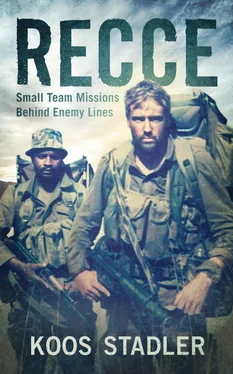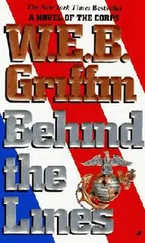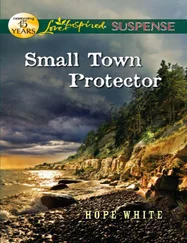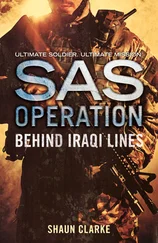Late that night, while standing with the other Small Teams operators around Oom Boet’s bed in the sickbay at Ondangwa, I once again realised what an extraordinary individual he was. He had just undergone emergency surgery and was about to be evacuated to 1 Military Hospital in Pretoria. He was practically on his deathbed. We were called in to say our farewells, and stood with tears in our eyes, when Oom Boet suddenly spoke, in a faint but clear voice.
“Small brains, what are you doing here around my bed?”
Diedies replied that we had come to greet him, and he asked mischievously, “So where are you all going, then?”
During the extensive debriefing process back at Special Forces Headquarters, we spent many hours inventing and analysing ways of engaging enemy aircraft guarded by troops sleeping underneath them. Various devices that could be set up at a distance of 30 or 40 metres from the target were evaluated, but in the end the authorities decided there would not be a third Operation Abduct, as it was evident that the enemy were expecting us to attack their fighters, and the risk of penetrating an enemy airfield was now considered too high.
Operation Abduct might not have been a success, at least not in terms of its strategic aim, but for each of us – the three operators who had prepared for months, spent countless nights rehearsing and finally executed that mission – it was a personal success. In all aspects it was a classic Small Team deployment that tested our skills, endurance and dedication to the limit. In the end it turned out to be the life-changing experience I had expected it to be. I knew that in future I would prepare the charge and stalk that aircraft with the same dedication, any time, every time.
OOM BOET SWART, warrior extraordinaire, was flown back to South Africa and survived the ordeal. After numerous operations and a long recuperation process, he took up his post as second-in-command of 5 Recce once again. Exactly one year after the night of the accident, he was awarded the “Chopper-Stopper” trophy by Gees Basson and the chopper boys from 19 Squadron – a mounted scale model of the yellow wheel blocks used to immobilise a stationary helicopter.
Having spent every possible moment of his time on Small Team operations and training over the years, Diedies was, in his own words, “a grossly under-qualified major by Infantry Corps standards” and had some serious catching up to do. Thus, for almost the whole of 1988 he was on a course at the Army College in Pretoria while I took command of 54 Commando.
The Border War was not over yet. During the latter part of 1987 and throughout 1988 South African forces were tied up in operations Moduler, Hooper and Packer at Cuito Cuanavale in eastern Angola. In the west of the country, Cuban and FAPLA forces advanced steadily towards Ruacana in a concerted effort to exert pressure on Pretoria. Special Forces reconnaissance teams were in great demand, but due to an unforeseen setback I would be out of action for the rest of the war.
In 1988 a number of new Small Team candidates were recruited from the Special Forces training cycle. In the past, an operator had to have at least two years’ experience with an operational commando before he could join Small Teams, but an exception was made to train newly qualified operators in an effort to bolster the strategic reconnaissance capability. We presented the reconnaissance course at 5 Recce, utilising the Small Team guys as instructors. One morning during PT I took the students up a rocky outcrop outside the base to give them an orientation of the terrain. When jumping from one cliff to the next, I lost my balance and fell. One of the students tried to catch me, but I took him down with me. Together we took a ten-metre fall down the cliff face.
Both the student and I sustained injuries that put us out of commission for months. Fortunately, there was a strong element of Small Team operators who could finish the training and take the newly qualified teams through their paces. After a few weeks in hospital and subsequent physiotherapy treatment, I joined the new teams on their first deployment. In June 1988 Dave Scales and I established a Tac HQ at Fort Rev, from where a number of deployments would be launched.
For me, this last Small Team deployment of the war turned out to be a most rewarding experience, since I had a “bird’s-eye view” from the Tac HQ and could watch a perfectly planned and expertly executed recce mission unfold. A large Cuban deployment, which would serve as a staging point for an expected advance on Calueque, had allegedly been established at Techipa, west of the Cunene River. A Small Team consisting of Menno Uys and Mike Mushayi was tasked with determining the position and strength of the base.
The team was inserted by helicopter, and over the next two weeks executed a classic recce mission of the Cuban forward deployment. In the Tac HQ I had the opportunity to see Dave Scales in action as he guided the team along, sometimes encouraging, sometimes coaching, always remaining calm and collected, always in complete control. After every sched I plotted information from the team’s message on the map, systematically piecing together the intelligence picture until we had a six-figure grid reference and details of vehicles and strengths. The team withdrew without the enemy becoming aware of their presence. The mission was a resounding success that embedded Small Team tactics, at least for me, as a tried-and-tested modus operandi.
At the end of 1988 Diedies left for 1 Recce in Durban. He was promoted to the rank of commandant and offered the position of OC 1.2 Commando, the Special Forces training unit on the Bluff. I was sad to see my friend and close colleague leave, but realised that times were changing and that one had to adapt. Although this move heralded the end of an era, it was not the end of our friendship, and over subsequent years we would still have great times together.
André Diedericks left an immeasurable impression on my life. He departed on his final solo mission in 2005 when he died of cancer. Diedies left behind his wife, Rietjie, and two beautiful daughters, as well as a close circle of Small Team comrades who will never forget him. The little honour I bring him in this book will never do justice to the unique character of my team mate and friend.
José da Costa remained with 5 Recce and played a major role in the selection and training of young operators, exerting extraordinary influence and shaping the lives of numerous Special Forces soldiers. In later years he was transferred to senior warrant officer positions outside Special Forces to gain broader experience, but was eventually brought back to the Special Forces School to apply his vast knowledge and experience there.
The Border War came to an end and so did the era of specialised deep penetrations behind enemy lines. But my own career in Special Forces was far from over. At the end of 1989 I was also transferred to the Special Forces School at 1 Recce in Durban, where I took command of the Special Techniques Branch. With a capable team of operators, I taught the skills I had accumulated over the years. We presented the reconnaissance course, sniper training, basic and advanced photography, and climbing techniques in both mountainous and urban environments.
As a runner-up prize for my excursions into all kinds of exotic places, I was awarded the Honoris Crux Bronze for bravery. Although I am not particularly boastful about this, as I have always known my fears and have never considered myself as an extraordinarily brave man, I treasure it because the citation was compiled and submitted by the man who to me was the personification of the ultimate warrior – my team buddy and mentor, André Diedericks.
Читать дальше












